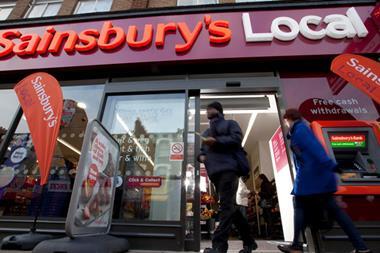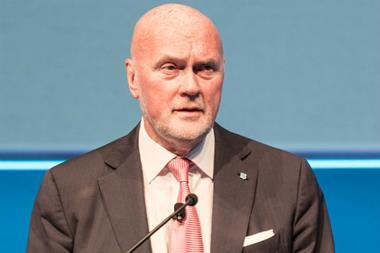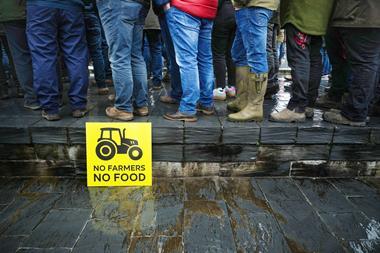Sainsbury’s four controversial automated warehouses - widely acknowledged as a key reason for the chain’s availability crisis in recent years - are at last operating as originally intended, according to supply chain director Lawrence Christensen.
A new transport management system is also being planned to create a “central brain” for the entire transport fleet and for suppliers, to be controlled by Sainsbury. Plans to scrap the current warehouse management systems are also being mooted.
At their lowest point last year, Hams Hall, Waltham Point, Rye Park and Hoddesdon were turning away 50% of supplier
deliveries, admitted Christensen. However, he says that by 2008, Sainsbury will have a supply chain “second to none”.
Last October, the four warehouses were each operating at a capacity of 800,000 cases a week being picked and delivered - well below the two million cases target - and systems were breaking down every day. But he said they were now exceeding targets at 2.2 million cases each.
“One year in since I joined, we’ve made significant strides,” said Christensen, the former Safeway group operations director. “I must emphasise that I would not have started with automated warehouses. But you have to make the best of what you’ve got.”
Although Matalan supply chain director Roger Burnley has now been appointed as his successor, starting in January and taking the reins from March, Christensen, who stays with the business until December 2006, is still pushing forward with future initiatives. The next phase is the transport management system, similar to the one “once enjoyed by Safeway”. “We want to be able to manage the whole network on one system, managed by one team looking at the whole country. We want 100% control and it will mean never having an empty lorry,” he added.
Sainsbury is currently running two warehouse management systems, which control and monitor operations within the depots. Christensen is keen to ditch both in favour of a brand new package. “Neither systems have labour management, but we need to be able to control and run our labour force beyond using pen and paper.”
Rachel Barnes
A new transport management system is also being planned to create a “central brain” for the entire transport fleet and for suppliers, to be controlled by Sainsbury. Plans to scrap the current warehouse management systems are also being mooted.
At their lowest point last year, Hams Hall, Waltham Point, Rye Park and Hoddesdon were turning away 50% of supplier
deliveries, admitted Christensen. However, he says that by 2008, Sainsbury will have a supply chain “second to none”.
Last October, the four warehouses were each operating at a capacity of 800,000 cases a week being picked and delivered - well below the two million cases target - and systems were breaking down every day. But he said they were now exceeding targets at 2.2 million cases each.
“One year in since I joined, we’ve made significant strides,” said Christensen, the former Safeway group operations director. “I must emphasise that I would not have started with automated warehouses. But you have to make the best of what you’ve got.”
Although Matalan supply chain director Roger Burnley has now been appointed as his successor, starting in January and taking the reins from March, Christensen, who stays with the business until December 2006, is still pushing forward with future initiatives. The next phase is the transport management system, similar to the one “once enjoyed by Safeway”. “We want to be able to manage the whole network on one system, managed by one team looking at the whole country. We want 100% control and it will mean never having an empty lorry,” he added.
Sainsbury is currently running two warehouse management systems, which control and monitor operations within the depots. Christensen is keen to ditch both in favour of a brand new package. “Neither systems have labour management, but we need to be able to control and run our labour force beyond using pen and paper.”
Rachel Barnes


















No comments yet